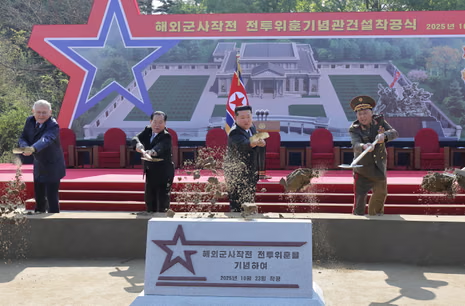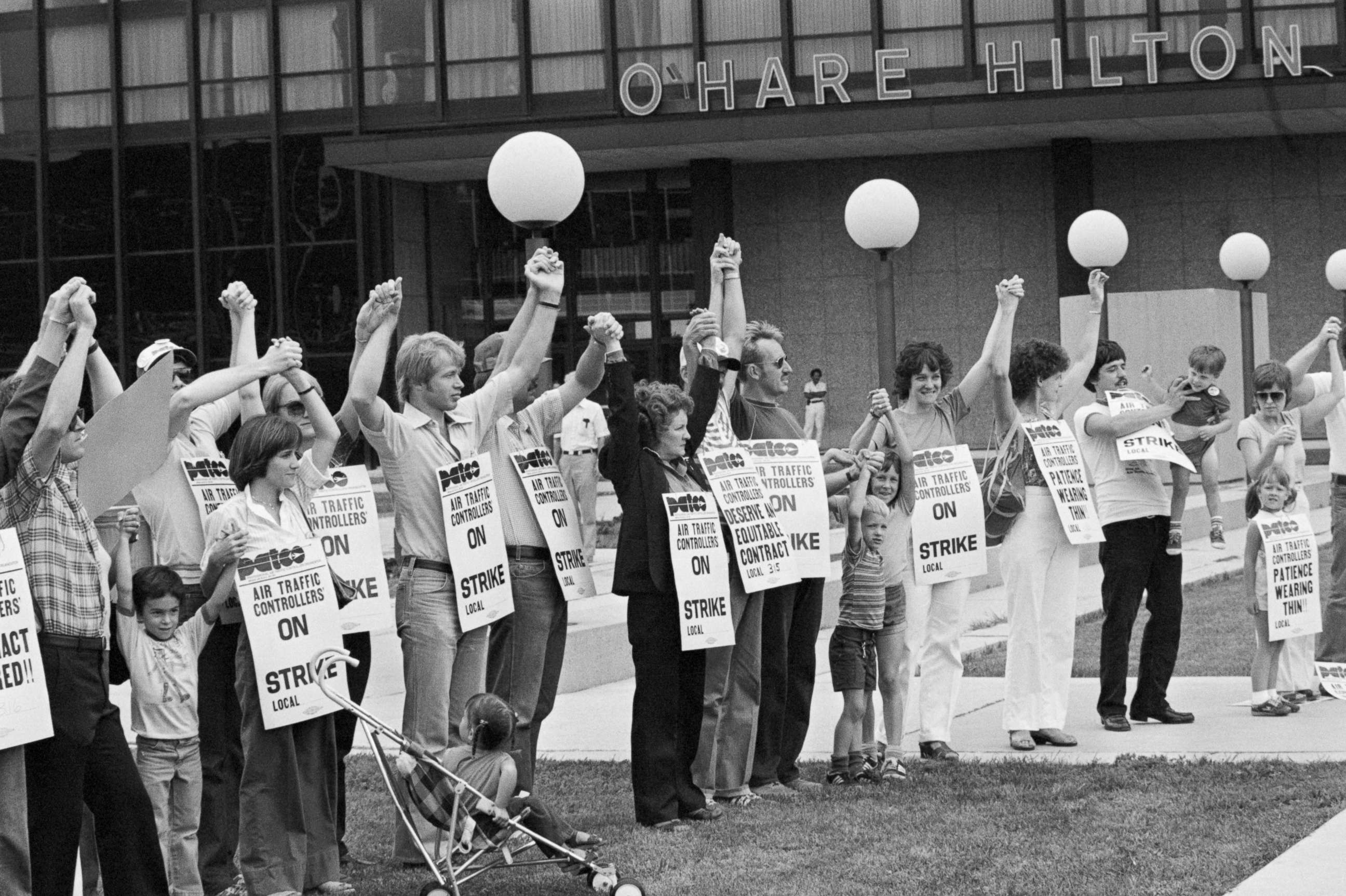
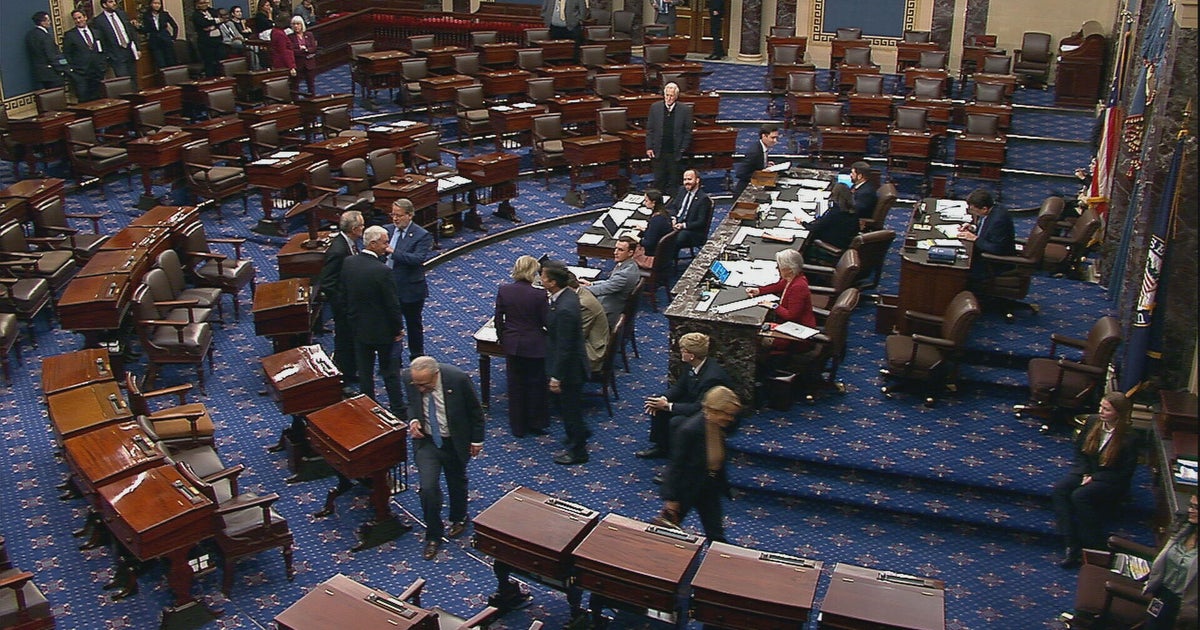
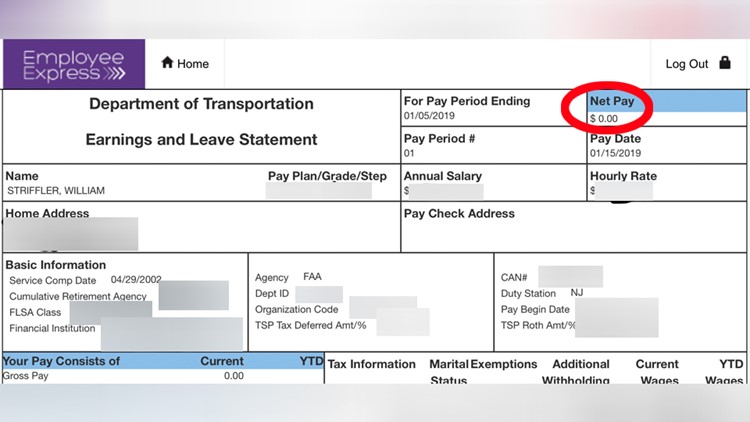
When the wheels of state stop turning, it is not always because the machinery breaks, but because someone pulled the plug. That is what is happening now in Washington, D.C. The Shutdown Fairness Act, introduced in the U.S. Senate, failed to muster the 60-vote threshold needed to proceed, with 54 in favour and 45 opposed. The failure comes against the backdrop of a government shutdown now in its third week, with tens of thousands of “essential” workers continuing to labour without pay.
The core question is stark: how long can a democratic government ask public servants to serve without compensation, while the political class trades blame like chips at a poker table? The question is not theoretical; it is practical, human, moral.
What the bill would do
The Shutdown Fairness Act, sponsored by Ron Johnson (R-Wisconsin), was designed to provide immediate appropriations to pay federal employees who are required to work during a lapse in funding—“excepted employees,” so-called, and even military personnel on active duty. Under current law, those workers are required to work but not paid until the government closes its funding gap. The bill would have changed that: payments during the shutdown rather than after.
In effect: you work now, you are paid now. Not months later. Not when political horse-trading ends. Now. But as the Senate vote revealed, the bill’s simple logic collided with a far more complex political map.
Political mechanics and the impasse
The essential fairness of paying workers who are required to work has broad appeal. Yet the political calculus became fraught. Many Democrats opposed advancing the bill, not necessarily because they opposed payment for these workers, but because they argued the bill didn’t go far enough. It did not guarantee payment for furloughed workers (those sent home without work during the shutdown). They instead introduced the True Shutdown Fairness Act, which would pay all federal workers, including contractors and furloughed employees. That bill, however, was not brought up for a vote.
On the GOP side, proponents framed the Johnson bill as a modest, targeted measure, pragmatic and achievable. One key Republican floor speech described the situation thus: “We are forcing about 2.8 million federal workers to work, military, law enforcement, people who write Social Security checks, air traffic controllers, keeping our skies safe.”
In short, the moment is urgent. The political alignment, less so.
The human and institutional cost
Consider what is happening on the ground. Federal air traffic controllers continue to manage thousands of flights without pay. Border agents patrol while their children’s tuition deadlines loom. Contractors and service workers—cafeteria staff, cleaners, security—face bills without promise of check. The government that declares “essential” keeps operating, but without honouring the foundational contract of modern labour: you do the work, you get paid.
Institutionally, the shutdown does far more than harm individuals. It chips away at the credibility of the government. If the state cannot ensure paychecks for those who keep it moving, the veneer of competence thins. Faith in public service, in the role of government itself, erodes.
Why the stalemate matters
This shutdown is not just another headline. It is a stress test of democratic governance in a subtle way. It raises questions about the relationship between bureaucracy and politics, about the resilience of state functions in polarized times. If the walls of the state can grind to a halt because parties refuse to compromise, what does it say about the state’s durability?
Moreover, the failure to secure even this narrowly targeted payment law signals a breakdown in legislative negotiation. The focus has shifted from “how do we keep government functioning?” to “how do we win the next game?” The public servants are caught in between.
Possible resolutions and their limits
There are a few paths forward. One is that Congress passes a full appropriations bill or continuing resolution, ending the shutdown. Another is that a narrow payment bill or hybrid emerges, bridging the gap for workers now. A third is a longer stalemate, forcing broader negotiations under worse conditions.
Yet each path bears risk. A full funding bill may involve concessions that one side finds intolerable. A narrow payment bill may provoke partisan backlash or set precedent for future shutdowns. An extended pause of government functions deepens public fatigue and distrust.
Reflection
We often think of shutdowns as political theatre, with congressional lights off, signs on closed doors, broad frustration. But the deeper cost lies in the hidden gears: the unpaid guard at the gate, the controller clearing the runway, the worker cleaning the hallways of power. When they pause, so does trust.
The failure of the Shutdown Fairness Act is more than one vote. It is a turning point: will the machinery of governance recognise its workers as an afterthought, or will it affirm their dignity by paying them without delay? The answer matters, not only for those individuals but for the implicit bargain of a functioning democracy.
Monuments of Loyalty
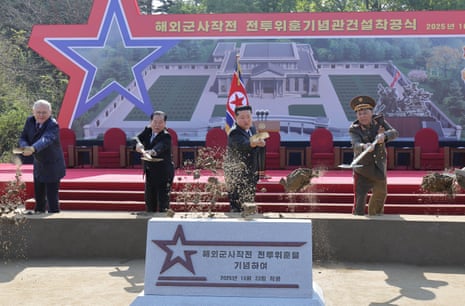

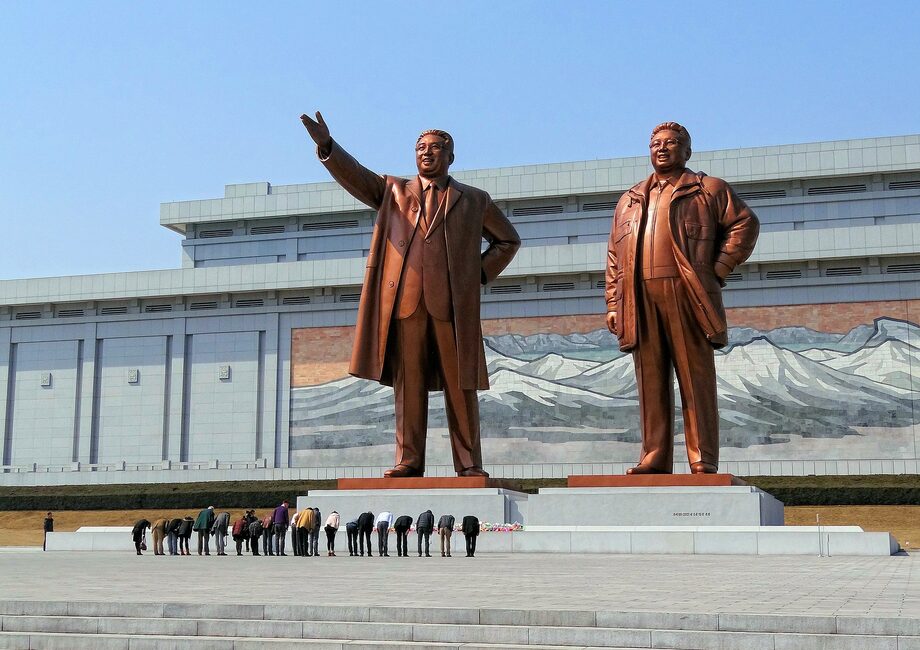
Half a world away, in the regime capital of Pyongyang, a different kind of rupture is being memorialised. The Memorial Museum of Combat Feats at Overseas Military Operations (construction commenced October 2025) is dedicated to North Korean soldiers who died fighting alongside Kursk region units in support of Ukraine war operations under Russian command. This symbolic act is a signal: for the authoritarian regime of Kim Jong Un, the war in Ukraine is no longer distant. It is a chapter of shared sacrifice and an alliance turned solid.
The facts so far
According to North Korean state media and satellite imagery, the museum groundbreaking was attended by Kim and the Russian ambassador to North Korea. North Korea has acknowledged formally that its soldiers died on the battlefield in Russia-Ukraine operations. The museum is to serve as a “sacred sanctuary” dedicated to the “immortality of true patriots.”
Reports indicate that at least hundreds of soldiers have died, thousands more wounded. These are North Korean units integrated (in one form or another) into Russian war planning, supplying manpower, artillery, and missiles.
Why this matters
For North Korea, symbols are policy. The museum is wrought from ideology: it declares a new chapter of power projection, alliances, and identity. It is not simply a tribute to death; it is a declaration of purpose, a partnership declared in stone.
By constructing this memorial, Pyongyang signals to Moscow, and to the world, that it is a partner, not just a satellite. The alliance is being written into the architecture. The implications ripple beyond the Korean Peninsula.
Strategic context
The deeper alliance between North Korea and Russia has multiple dimensions:
- Military: North Korea reportedly supplied artillery shells, missiles, and manpower to Russia’s Ukraine campaign.
- Diplomatic: A mutual defence treaty between the two states enhances formal commitments.
- Symbolic: Pyongyang’s public commemoration of its soldiers overseas adds a new layer to its narrative of national strength.
In effect, North Korea is shifting from self-isolated pariah to engaged actor—one seeking leverage, technology, and recognition.
Risks for international order
This development matters because it erodes norms. Arms flows and troop deployments across conflict zones transcend national borders. When a state like North Korea sends troops to assist another in an overt war, with memorial follow-through at home, it challenges the post-Cold War expectation that national armies fight only under their own flag, for their own government.
It raises questions: Will other states follow this model? Will the architecture of de facto alliances become more fluid, less transparent, less bound by treaty obligations or international oversight? Will memorials of this kind become a tool of propaganda as much as of tribute?
Domestic dimensions in North Korea
There is also a domestic script. The regime of Kim uses war symbolism to bind its population to the state narrative: sacrifice, loyalty, struggle, and reward. The memorial serves internal purposes—honouring families of the fallen, exhibiting martial credentials, projecting national pride. In a country accustomed to isolation, this is a forward-looking statement.
Reflection
In the West it might seem puzzling that a monument matters. But monuments are magnets of meaning. They crystallise alliances, they bind memory, they declare identity. When states build them for foreign campaigns, they signal more than loss; they signal recalibration.
North Korea’s memorial is not simply for its dead; it is for its living strategy. It asks: Where does this regime see itself in the map of power? The answer, in stone and bronze, is aligned with Russia’s war making. And that alignment will have consequences, intended and unintended, far beyond the Pyongyang plaza.
Two Fronts, One Underlying Question
What links these stories—the unpaid federal worker in the United States and the soldier’s memorial in North Korea—may not be obvious at first glance. Yet they share a deeper logic: the question of state legitimacy and the distribution of duty and reward.
In Washington, the state asks its workers to uphold security, administration, and continuity. But when those workers look at their unpaid work and at the political wrangling above them, trust erodes. In Pyongyang, the state asks its soldiers to fight overseas, die overseas, and then be enshrined in monuments. The question for the citizen-subject there is different but conceptually related: What will be the condition of my service? What will be the reward? What is the meaning of loyalty when drawn across national borders?
State-worker reciprocity
A functioning state rests on a simple contract: I do the work, you provide the pay; you do the governing, I receive the services. When the pay is delayed, the contract frays. If the state says “you are essential” yet treats the workers as expendable, the narrative of state function begins to unravel.
Across the globe, regimes (democratic or autocratic) rely on this contract in some form. When they fail to honour it, the consequences differ in form, but the logic is similar. In the U.S., political dysfunction threatens day-to-day operations. In North Korea, the memory of service becomes a tool, but it also raises the implicit question of what the living owe the dead, and what the dead owed the state.
Symbolism versus substance
The American weight is in substance: paychecks, duties, institutional trust. The North Korean weight is in symbolism: memorials, blood ties, alliances. Yet symbolism and substance are connected. A monument without righteous purpose is hollow; a pay stub without acknowledgement of worth invites bitterness.
The politics of fairness
Fairness is the moral axis here. In the shutdown scenario, fairness demands “you work, you are paid.” In the memorial scenario, fairness demands “you fought, you are honoured, your family is cared for.” When the state falls short of either, the social compact is weakened.
Moreover, the fairness question is not just internal—it reaches across borders. When one country’s soldiers fight under another’s flag, when one government’s public servants stand unpaid because of another’s refusal to budget, the international dimension complicates domestic ethics.
Institutional resilience and fragility
Both stories illustrate the resilience—or brittleness—of institutions. The U.S. government had mechanisms in place for funding, but political breakdowns rendered them inert. North Korea has mechanisms for sacrifice, commemoration, and mobilisation, but the partnership with Russia marks a shift in institutional orientation.
Institutions depend on expectations. When the expectations change—when workers expect pay but do not receive it, when soldiers expect national recognition but come back gravely wounded or worse—the institution must adapt or face decline.
Global implications
We live in an era where domestic governance and international alliances intertwine and feed off one another. The U.S. shutdown does not only affect American workers; it affects global markets, confidence in governance, and even perceptions abroad. Likewise, North Korea’s alignment with Russia does not only shift the power map in East Asia; it impacts sanctions regimes, arms flows, nuclear proliferation risks, and the behaviour of other states.
When a large democracy struggles to pay its essential workers, and a closed regime builds monuments abroad to its soldiers, the global story is of system stress. It is about states recalibrating duty, reward, legitimacy, and symbolism.
What Comes Next
For the United States
The pressing need is immediate: restore pay for the workers who keep the government functioning. But beyond that lies a broader requirement: reform the mechanisms that allow shutdowns to wreak havoc. The legislative architecture must ensure that essential functions are insulated from political deadlock. Without that, every future shutdown becomes more than an inconvenience; it becomes a structural risk to governance.
Negotiations must acknowledge both fairness and practicality. Narrow payment bills alone will not suffice if the broader funding hiatus persists. The democratic imperative demands that the institution of public service be upheld, not held hostage by strategy.
For North Korea and its partners
The memorial in Pyongyang signals an enduring shift. But with strategy comes risk. North Korea’s integration into Russia’s war effort raises the potential for blowback—from sanctions, from escalation, from regional realignment. For Russia, the alliance provides manpower and narrative, but it may also add moral and operational burdens.
If the memorial functions as propaganda, its effect will depend on how the war evolves. A defeat or protracted conflict could turn memorialisation into a reminder of wasted effort rather than noble sacrifice. For Pyongyang, the bet is that aligning with Moscow now pays dividends later.
For the global observer
These two stories invite us to reflect on how the modern state manages duty, reward, and meaning. Workers without pay. Soldiers commemorated in foreign wars. Governments stretched across realms of symbol and substance. The question is not which system is worse, but what are the foundational norms we expect from government, and what happens when those norms weaken.
Do we expect the state to honour its workforce unconditionally? Do we accept that alliances may stretch beyond borders and still retain meaningful accountability? These are not rhetorical questions. They shape how societies function, and how they endure.
Final Thoughts
When the heart of government, the people who keep it running, is left unpaid, it is not merely an injustice; it is a signal that the system is under pressure. The failure of the Shutdown Fairness Act is more than a vote—it is a symptom.
Similarly, when small watchers of steel in Pyongyang build a memorial to foreign service in a foreign war, it is more than symbolism; it is a realignment. It says: we are here, allied, committed.
Both stories, disparate though they may seem, ask the same question: what does service mean in our time, and what are we, collectively, willing to give in return? The answers will define not only the immediate outcomes, but the shape of the state, globally, for years to come.

